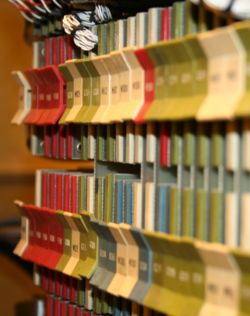From Computer History Wiki
|
|
| Line 71: |
Line 71: |
| | ===M series=== | | ===M series=== |
| | | | |
| − | The M stands for magenta. Part of this line is simple TTL-level logic, while later on, it became quite complex, see [[list of DEC parts]]. | + | The M stands for magenta. Part of this line is simple TTL-level logic, while later on, it became quite complex, see [[list of DEC part numbers]]. |
| | | | |
| | ===R series=== | | ===R series=== |
Revision as of 03:01, 18 May 2007
This article on DEC hardware is a stub. You can help by expanding it.
Flip-Chip was a DEC registered trademark, named after the "flipchip" component mounting technique which quite rapidly faded from fame. The name was retained although the majority of Flip-Chips never really were flipchip-mounted as it became apparent that the flipchip mounting technique was highly unreliable. Flip-chips were used in the DEC PDP-7 (Referred to in documentation as the "FLIP CHIP"), PDP-8, PDP-9 and PDP-10, beginning on August 24, 1964.
In practice, they performed generic, simple functions, similar to an integrated circuit. They were approximately 4 inches long and 2.5 inches wide. Each had 36 connectors, 18 on each side.
Naming
There appeared to be some confusion inside DEC at the time, as various manuals refer to it as "FLIP CHIP", "Flip Chip", "FLIP-CHIP", "Flip-Chip" and "Flip Chip", with trademark and registered trademark symbols.
Flip-Chip families

Flip-chips in different forms and colours, in a PDP-8.
The various families were colour-coded, and the first letter denoted a colour, which was also visible on the handle.
A series
The A stands for Amber. The A series were used for analog functions - ADCs, DACs, amplifiers etc.
| Part Number |
Description
|
| A123 |
Positive logic multiplexer
|
| A131 |
unknown
|
| A200 |
Op. amp.
|
| A206 |
Op. amp.
|
| A207 |
Op. amp.
|
| A214 |
unknown
|
| A215 |
unknown
|
| A404 |
sampler???
|
| A613 |
12 bit DAC converter
|
| A615 |
unknown
|
| A618 |
10 bit DAC converter
|
| A619 |
10 bit DAC converter
|
| A620 |
10 bit DAC converter
|
| A621 |
10 bit DAC converter
|
| A702 |
reference supply???
|
| A704 |
reference supply???
|
| A811 |
10 bit ADC converter
|
| A990 |
amplifier
|
| A992 |
amplifier
|
B series
The B stands for Blue. The B series were used as core logic in the higher-end CPUs.
G series
The G stands for Green. The G series were used for "anything with non-standard voltages", I think.
M series
The M stands for magenta. Part of this line is simple TTL-level logic, while later on, it became quite complex, see list of DEC part numbers.
R series
The R stands for Red. Slower logic than the B series, but cheaper. Used extensively in the I/O circuitry of computers.
W series
The W stands for White. These are components that plug into Flip-Chip sockets, but have no logic of their own.

